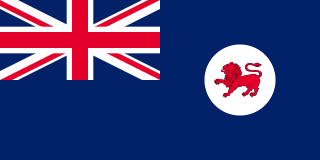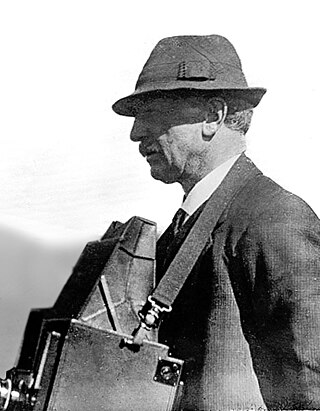Plot summary
Francis Morris, a young, enthusiastic engineer from Melbourne, and his wealthy friend Peter, a geologist from Hobart, depart on an endeavour of exploring the wilds of Tasmania. After becoming lost in the wilderness, they stumble upon a group of people who have been living in isolation since the mid-19th century.
Because of this social seclusion the tribe has developed its own unique language and culture constructed upon the social conventions of Regency England. Upon returning to Hobart, the pair informs Peter's father Dr William Archer of the group, and he arranges for their integration back into civilization.
The group does not integrate into society well in relation to their mental and physical incapacities. They are seen as "an endorsement of Nazi beliefs" and, as a result, the tribe is imprisoned in an asylum. In the meantime, with the advent of World War II, Peter and Francis are sent to Europe to fight. In the years that follow, one by one each member of the group dies, with the exception of Betsheb, leaving her suffering "profound depressions" and in an unfit condition to be released, so for another year she remains at New Norfolk Asylum, during which time she is given shock treatment.
Francis is eventually sent back to Australia. Having been disillusioned and traumatized by the events of the war, as well as resentful of the Australian attitude towards our history and mistakes, Francis elects to live with Betsheb once more in the wilderness, taking her back home.

Hobart is the capital and most populous city of the island state of Tasmania, Australia. Home to almost half of all Tasmanians, it is the southernmost and least-populated Australian state capital city, and second-smallest if territories are taken into account, before Darwin. Hobart is located in Tasmania's south-east on the estuary of the River Derwent, making it the most southern of Australia's capital cities. Its skyline is dominated by the 1,271-metre (4,170 ft) kunanyi / Mount Wellington, and its harbour forms the second-deepest natural port in the world, with much of the city's waterfront consisting of reclaimed land. The metropolitan area is often referred to as Greater Hobart, to differentiate it from the City of Hobart, one of the seven local government areas that cover the city. It has a mild maritime climate.

Tasmania is an island state of Australia. It is located 240 kilometres to the south of the Australian mainland, separated from it by the Bass Strait, with the archipelago containing the southernmost point of the country. The state encompasses the main island of Tasmania, the 26th-largest island in the world, and the surrounding 1000 islands. It is Australia's least populous state, with 569,825 residents as of December 2021. The state capital and largest city is Hobart, with around 40% of the population living in the Greater Hobart area. Tasmania is the most decentralised state in Australia, with the lowest proportion of its residents living within its capital city.

The Aboriginal Tasmanians are the Aboriginal people of the Australian island of Tasmania, located south of the mainland. At the time of European contact Tasmanian Aboriginals were divided into a number of distinct ethnic groups. For much of the 20th century, the Tasmanian Aboriginal people were widely, and erroneously, thought of as extinct and intentionally exterminated by white settlers. Contemporary figures (2016) for the number of people of Tasmanian Aboriginal descent vary according to the criteria used to determine this identity, ranging from 6,000 to over 23,000.

Truganini, also known as Lalla Rookh and Lydgugee, was a woman famous for being widely described as the last "full-blooded" Aboriginal Tasmanian to survive British colonisation. Although she was one of the last speakers of the Indigenous Tasmanian languages, Truganini was not the last Aboriginal Tasmanian.

George Augustus Robinson was a British-born colonial official and self-trained preacher in colonial Australia. In 1824, Robinson travelled to Hobart, Van Diemen’s Land, where he attempted to negotiate a peace between European settlers and Aboriginal Tasmanians prior to the outbreak of the Black War. He was appointed Chief Protector of Aborigines by the Aboriginal Protection Board in Port Phillip District, New South Wales in 1839, a position he held until 1849. He is also remembered today for his role in the supply of Aboriginal remains to English 'collectors'.
The history of Tasmania begins at the end of the Last Glacial Period when it is believed that the island was joined to the Australian mainland. Little is known of the human history of the island until the British colonisation of Tasmania in the 19th century.

The Gordon-below-Franklin Dam project was a proposed dam on the Gordon River in Tasmania, Australia, that was never constructed. The movement that eventually led to the project's cancellation became one of the most significant environmental campaigns in Australian history.

New Norfolk is a town on the River Derwent, in the south-east of Tasmania, Australia. With a population of 6,153 in 2021, New Norfolk is the principal township of the Derwent Valley region. Located within the Derwent Valley Council, New Norfolk is situated 32 kilometres (20 mi) north-west of the state capital Hobart on the Lyell Highway and classified as part of the Greater Hobart statistical area.
Olegas Truchanas was a Lithuanian-Australian conservationist and nature photographer.

The South West Wilderness of Tasmania, Australia is a remote and inaccessible region of South West Tasmania containing unspoilt scenery, rugged peaks, wild rivers, unique flora and fauna, and a long and rugged coastline. Parts of the wilderness are more than 50 km from the nearest road, so the only access to the area is by foot, air or sea.

Port Davey is an oceanic inlet located in the south west region of Tasmania, Australia.

Sport is a significant aspect of the culture on the island state of Tasmania, Australia. Soccer is Tasmania’s most widely played team sport, with an estimated 36,773 Tasmanians, comprising 6.8% of the state’s population, participating annually. Netball ranks as the most popular team sport for female participation, while cricket leads among male participants. Excluding general recreational activities like walking, gym or bushwalking, the most popular sports in Tasmania are swimming, athletics/track and field, cycling/mountain biking, golf and Australian rules football.

John Watt Beattie was an Australian photographer.

Tasmanian Gothic is a genre of Tasmanian literature that merges traditions of Gothic fiction with the history and natural features of Tasmania, an island state south of the main Australian continent. Tasmanian Gothic has inspired works in other artistic media, including theatre and film.
The history of the Tasmanian AFL bid covers a series of proposals and bids between 1987 and 2023 for a Tasmanian-based Australian rules football team in the Australian Football League and AFL Women's premierships. Eight formal proposals for a new or relocated club to represent Tasmania were made over this time, the earliest coming in 1992, while informal proposals were raised as early as 1987, when the Victorian Football League commenced its expansion to become a national competition.
Norman James Brian Plomley regarded by some as one of the most respected and scholarly of Australian historians and, until his death, in Launceston, the doyen of Tasmanian Aboriginal scholarship.
Bruny Island Tasmanian, or Nuenonne ("Nyunoni"), a name shared with Southeast Tasmanian, is an Aboriginal language or pair of languages of Tasmania in the reconstruction of Claire Bowern. It was spoken on Bruny Island, off the southeastern coast of Tasmania, by the Bruny tribe.

Luggenemenener was an early nineteenth-century Tasmanian Aborigine woman, who lived in the early 1800s. She endured the Black Wars and risked her life to protect her young son from a genocide of her people. Her homeland was in north-east Tasmania's Ben Lomond region. According to the French explorer Nicolas Baudin, Tasmania was originally known as Lutruwita.
Charles Alfred Woolley was born in Hobart Town, Van Diemen's Land. He was an Australian photographer but also created drawings, portraits and visual art. He is best known for his 1866 photographic portraits of the five surviving Aboriginal Tasmanians from Oyster Cove, that were exhibited at the Intercolonial Exhibition of Australasia colonial exhibition in Melbourne the same year.

Douglas Thomas Kilburn was an English-born watercolour painter and professional daguerreotypist who operated in Melbourne 1847–49, producing some of the earliest portrait photographs of indigenous Australians.














